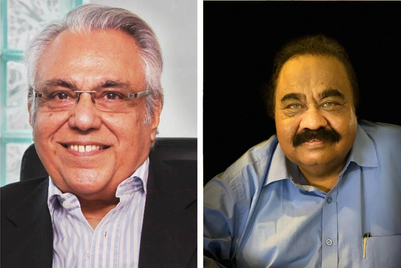
Last month, Burger King caused an unprecedented stir (some would say storm) with a global campaign that showcased its prized Whopper burger decaying over a 34-day period. The ‘rotten ad’ was ostensibly designed to highlight Burger King's decision to remove artificial preservatives from its flagship burger. But the inevitable question being asked by advertising pundits is whether it is an outstanding example of Burger King's creative genius, or is it a stunt, a gimmick, designed to win advertising awards … but one that has left customers dumbfounded and perhaps a bit queasy?
To the pros of the campaign.
1. The campaign is bold. It is out-of-the-box. It is different.
2. It is eye-catching; it is unexpected.
3. It is irreverent. It is fearless.
Eleven years after McDonald’s shut shop in Iceland, hundreds of thousands of online users follow the live slow decay of its last consumer order — a seemingly indestructible burger with a side of fries protected inside a glass case, almost like a precious gem. The American fast-food chain closed its only three branches in Iceland during the subarctic island’s financial crisis in 2009, making it one of the only Western countries without a McDonald’s.
On Oct. 31 of that year, just before the restaurant’s closure, Icelander Hjortur Smarason bought a meal for conservation. Smarason has gone on record saying, “I decided to buy a last meal for its historical value since McDonald’s were closing down”. But more importantly, he had other plans. “I had heard that McDonald’s never decomposed so I just wanted to see if it was true or not.” He first kept the meal in his garage but then lent it to the National Museum of Iceland, after which it was moved to a hotel in Reykjavik for a while. Now the burger is on display like a work of art inside a glass case at Snotra House, a hostel in Thykkvibaer in southern Iceland. “People from around the world … come here just to visit the burger,” says Sigurdur Gylfason, the owner of the establishment, with obvious pride.
The hotel apparently receives up to 400,000 hits daily. Addressing claims that its burgers appeared immune to decay, McDonald’s stated in 2013 that “in the right environment, our burgers, like most other foods, could decompose,” adding that “specifically moisture” was necessary for the withering to happen. So with sufficient desiccation, they were “unlikely to grow mould or bacteria or decompose”.
The Burger King ‘mouldy burger’ ad obviously has its roots in the Iceland story. The all-natural-no preservatives Whopper has grown lots of mould after nearly 5 weeks, and each stage of its decomposition has been graphically captured and communicated by Burger King.
This campaign is clearly and brazenly an on-brand dig at McDonald’s, whose burgers - dictated by food folklore as in the Icelandic story - are said not to decompose at all.
Now to the cons of the ‘mouldy burger’ story.
1. It is a revolting visual, very unhygienic, very unappetizing.
2. It works contra to all rules of selling food … making it look fresh, healthy and good-to-eat.
3. A campaign and visualisation not intended to sell: it is meant to shock. And impress an advertising jury.
While the campaign itself has garnered millions of dollars worth of free media coverage, no evidence has emerged so far to show either a switch from Big Mac to Whopper or greater loyalty amongst Burger King regulars as a result of the campaign. Perhaps it is too early to take a call.
Frankly, if the debate is between ‘yum’ and ‘yuck’, 99 percent consumer would tick ‘yum’. It is really not in Burger King’s interest to associate its brand with rot and decay.
Sure, it may be an ingenious and clever comment on the supposed artificiality of McDonald’s food - which however doesn’t prevent McDonald’s from beating Burger King hands down on all the metrics that matter in business - so what really is the point of the ‘mouldy’ advertising?
Also, this ad is a response to the trope that McDonald’s food doesn’t rot. You as a consumer have to have followed that story to understand the Burger King response. Unfortunately, most consumers don’t spend their time keeping track of what any one brand does, let alone remember a story from a decade ago in faraway Iceland.
The ad industry rewards and awards cleverness. The Burger King ad is surely newsworthy and tongue-in-cheek. But McDonald’s has four-times the market share and 18-times the brand value (Source: BrandZ) and in the final reckoning, that is all that matters.
So if you want to win awards, do what Burger King does. Be gimmicky. Be gutsy.
But, if you want to be a USD150 billion plus company, then it is any day more prudent to draw your learnings from McDonald’s!
Dr. Sandeep Goyal loves brand controversies; more importantly he loves figuring out the what, when and how behind the narratives.


.jpg&h=334&w=500&q=100&v=20250320&c=1)

.jpg&h=334&w=500&q=100&v=20250320&c=1)

.jpg&h=334&w=500&q=100&v=20250320&c=1)



.jpg&h=334&w=500&q=100&v=20250320&c=1)
.jpg&h=334&w=500&q=100&v=20250320&c=1)




.jpg&h=268&w=401&q=100&v=20250320&c=1)
.jpg&h=268&w=401&q=100&v=20250320&c=1)


